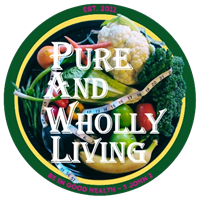Vitamin D is not like other vitamins. First off, your body can make its own D just from your skin receptors soaking up the sun’s UVB rays. Your cells send vitamin D straight down to your liver. There, it’s converted to a substance called 25(OH)D that doctors test you for to indicate a deficiency. That stuff is what courses through your blood, bodily tissues, and kidneys.
And then just when you think you understand vitamin D’s ways, it converts into a hormone called calcitriol and becomes the head honcho of calcium for your entire body. It even starts calling group meetings just to make sure your cells are all getting along: vitamin D smooths out intercellular communication by helping cells mature, reproduce, and stick together. You’ve got to love D for pulling rank like that.
But these are just some of the highlights of vitamin D’s far-reaching potential. Adequate levels of D may boost your immunity and insulin production. It’ll keep your cells in tiptop shape and help prevent osteoporosis and other bone diseases, like rickets. Vitamin D may even stave off heart problems, certain cancers, diabetes, depression, and brain diseases, such as dementia and Alzheimer’s.
Getting D from the sun
In the Northeast, we can’t bank on the sun for supplying us with vitamin D from about November to March. And even once summer hits, there are still barriers to getting a healthy and safe amount. The Vitamin D Council recommends anywhere from 15 minutes to 2 hours of sun exposure each day (depending on your skin’s pigmentation) to get the D you need, but it goes against every skin cancer-prevention advice you’ve ever heard to sit outdoors midday without sunscreen on, totally exposed to UV rays. It’s definitely difficult to rely on getting your daily dose of D from the sun. Luckily, there are other sources of this vitamin.
Eating vitamin D-rich foods
You know fatty fish are rich in heart-healthy omega 3’s, but did you know that they’re also chock-full of vitamin D? Consider eating more wild salmon, which has more than 1,400 IU of Vitamin D in half of a fillet, twice as much as your body may need a day. Other fatty fish that contain the vitamin include sardines, mackerel, eel, and trout. Lower amounts are found in rockfish, flounder, sole, red and black caviar, and oysters.
If you’re an ovo-vegetarian, egg yolks can contribute to your daily D needs, as can fortified products that have D2 or D3 on their nutritional label, such as milk, tofu, and certain breakfast cereals. If you’re vegan, try organic, sun-grown mushrooms, or scoop some microalgae powder into your morning smoothie to increase the vitamin D in your diet.
Choosing a supplement
An additional way to increase your vitamin D levels is by taking a natural supplement. There are basically two choices. The synthetic form of the supplement is often called Drisdol, Ergocalciferol, or D2. It’s vegetarian-friendly, plant-derived, and the one that doctors most often prescribe.
However, studies have found it to be significantly less effective than other forms of the vitamin, because it’s not the kind of D your body generates when exposed to the sun. Instead, look for supplements that contain Cholecalciferol (D3), the kind of D found in animal-based whole foods and naturally produced by your body.
Supporting vitamin-D absorption
There are also several essential nutrients, such as magnesium, zinc, boron, and vitamins K and A, that may increase the absorption of D in your body. These vitamins and minerals are naturally found in whole foods such as dark, leafy greens like spinach and kale, as well as black-eyed peas and fava beans, almonds and hazel nuts, and sesame and pumpkin seeds. They may be especially important to stock up on during the long winter months where there’s very little sunshine!
When you’re low in D
How would you know if you need to take a supplement or eat more vitamin D-rich foods? Some people experience signs of deficiency including bone pain, muscle weakness, low mood, and fatigue, though some are symptomless and only learn of a vitamin D deficiency through routine blood work. Even if you’re symptomless, it’s still a good idea to look into whether you’re getting enough D. A lack of the vitamin coupled with low calcium levels may place you at risk for serious health conditions down the road, such as osteoporosis.
It may take a little experimenting to determine just how much vitamin D you personally need to maintain your levels and keep symptoms at bay, and there’s little consensus on what actually constitutes a sufficient supply. The Vitamin D Council says to aim for 5,000 IU/day of vitamin D, while the Food and Nutrition Board recommends a lower range of 600 to 800 IU/day. If you want to stay in your target range, consider getting your vitamin D tested every three to six months, and paying close attention to how your body responds to different levels.
Have you ever had a vitamin D deficiency? What did you do to correct it?
